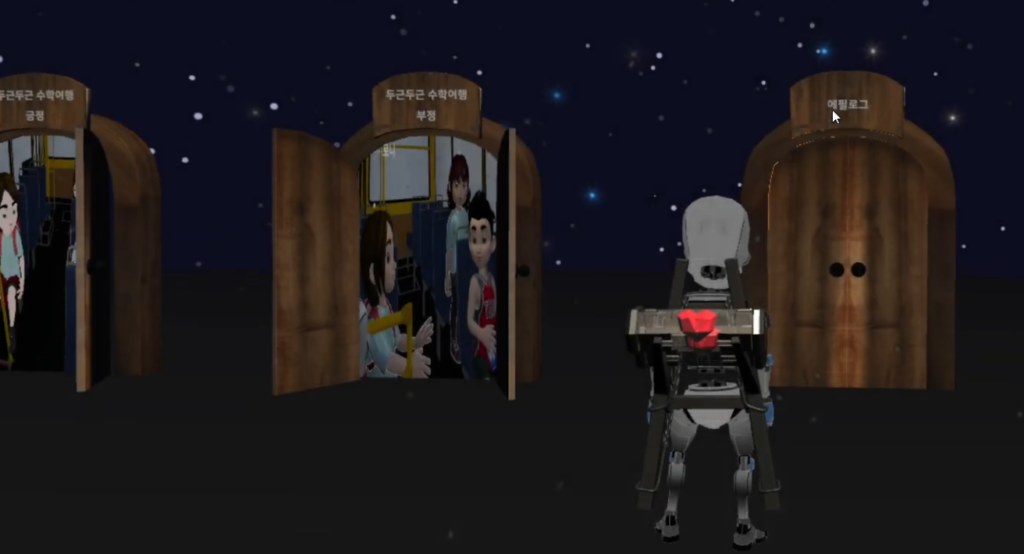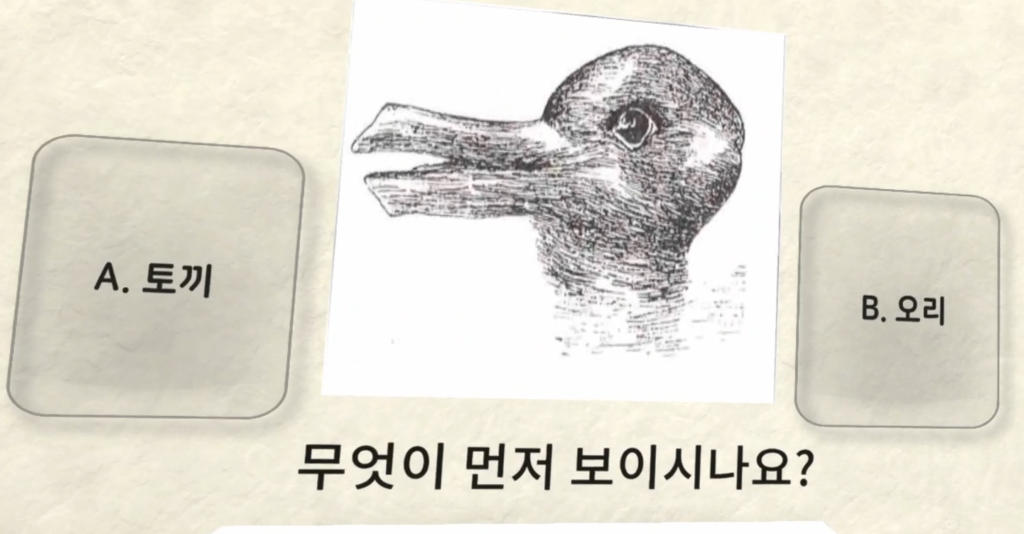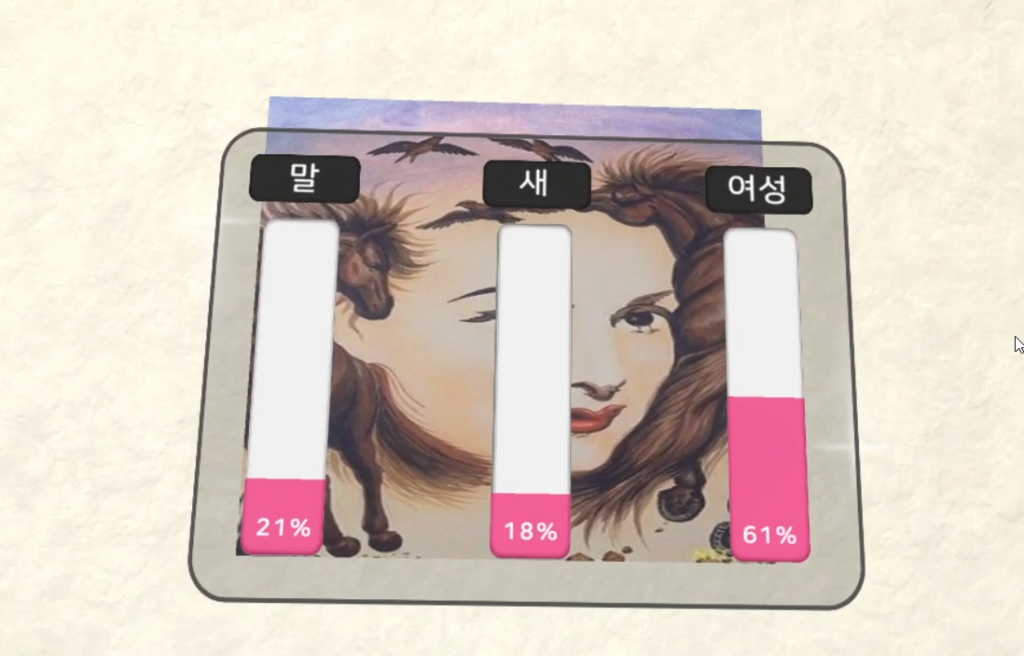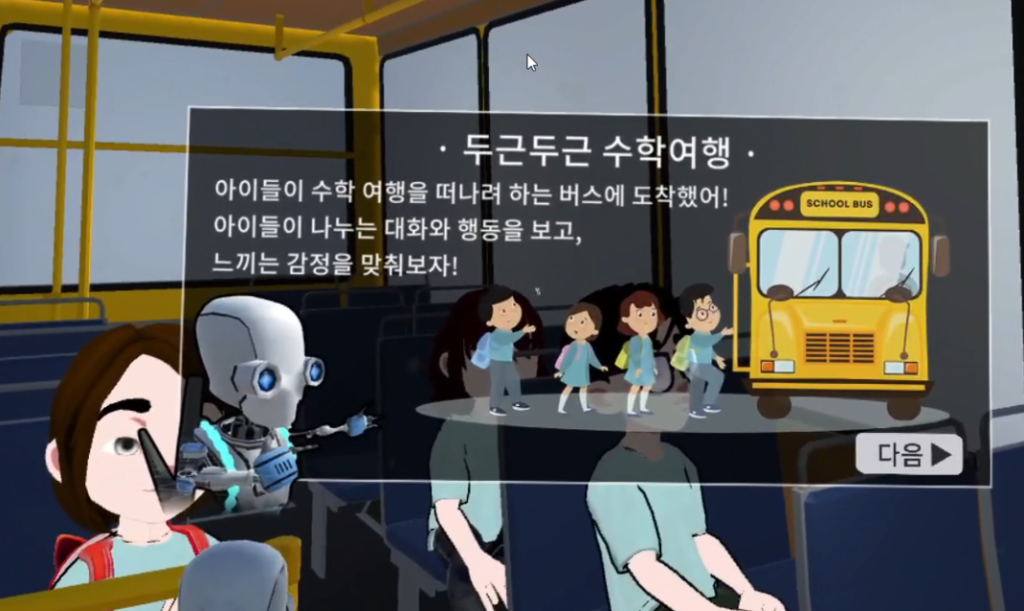Type: A suite of immersive virtual reality games for improving empathy skills.
Purpose: Help players develop their empathy skills based on different empathy types in a fun and immersive way.
Place: South Korea
Technologies: Unity, Oculus Quest 2
Period: 2022-2023
Contributors: Prof. Haejung Suk, Prof. Eunha Kim, Prof. Woojin Chang, Prof. Teemu H. Laine + lab students
Virtual Human EXperience (VHEX) is our recent initiative to harness realistic and intelligent virtual humans for serious games and applications in the field of psychology. As part of the larger project, we developed a suite of immersive VR games for empathy education. Empathy is an essential skill for humans, at it makes us capable of detecting and understanding each others’ emotional states, thereby contributing to social interactions and emotional well-being. Research has identified six empathy type constructs that can be organized into three dimensions:
- Cognitive (C) – Affective (A) empathy: cognitive empathy means the person’s ability to identify another person’s emotions, whereas affective empathy refers to the person’s ability to have the same emotion than another person (emotional contagion).
- Positive (P) – Negative (N) empathy: these relate to positive and negative emotions, respectively. For example, a person belonging to the positive empathy type can feel stronger empathy for positive emotions.
- Minority (m) – Majority (M) empathy: these indicate whether the person feels empathy for a minority or majority in a group setting.
By combining these constructs, we can define a person’s empathy type, for example CPm is a person with strong cognitive empathy for positive emotions who feels empathy for minorities in group settings.
The empathy education content that we developed contains three immersive VR applications with gamification elements, and an introduction / lobby scene that connects the three games — Mysterious Museum, Noisy School Trip, and 360-Degree Vicarious Drama Experience — each of which has two versions for specific empathy type constructs. The games were developed for Oculus Quest 2 using Unity and XR Interaction Toolkit. The protagonist is a robot who wants to become human but lacks the required empathy skills. The player controls the robot and experiences diverse empathy education contents through the games, finally becoming a human. The following screenshot shows the game’s lobby where the robot (player) chooses which game content to play:

Mysterious Museum: a puzzle game with the purpose of recognizing and accepting that people can have different perspectives over the same thing; this is a prerequisite for developing cognitive empathy. In the first level, the player interacts with ambiguous 2D images that represent multiple objects/things. The player chooses what they first see in the image, and then see statistics on how other players have answered. In the second level, the player interacts with ambiguous 3D objects that must be rotated and observed through a mirror. The following images demonstrate the Mysterious Museum game:
 |
 |
 |
 |
Noisy School Trip: a scenario-based simulation of children on a school trip in a bus where both negative and positive emotions emerge. The robot (i.e. the player) first watches the interactions between the virtual characters. Then, the player can choose one of the characters, thereby teleporting the robot inside the character’s head. While watching through the eyes of the character, the player guesses what the person feels in that situation, thus training cognitive empathy. Should the player feel the same emotion with the character, then affective empathy is also trained. Noisy School Trip has two levels for positive and negative empathy, respectively. The following images illustrate the game:



360-Degree Vicarious Drama Experience: an interactive 360-degree video production based on a high school where the player assumes the role of one of the characters in the drama that trains the majority and minority empathy skills. In the scenarios, a group of high school students interact and express both negative and positive emotions. The player is tasked to answer questions about the drama. The following screenshots show examples of the content:



